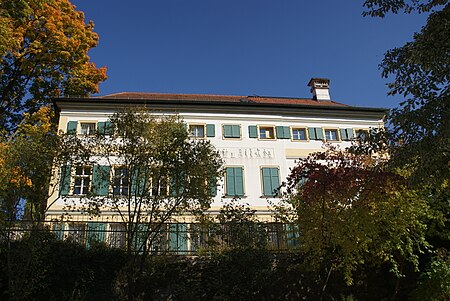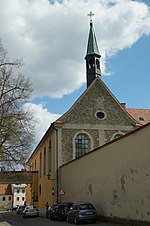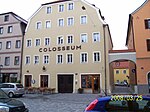Württembergisches Palais
Houses completed in 1806Museums in BavariaNatural history museums in GermanyNeoclassical architecture in GermanyNeoclassical palaces ... and 3 more
Palaces in BavariaRegensburgThurn und Taxis residences

The Württembergisches Palais (also known as the Herzogspalais) is an early 19th-century Neoclassical-style palace in the Western District (German: Westenviertel) of Regensburg in Bavaria's Upper Palatinate. The palace complex includes the Herzogspark, a municipal park with a Renaissance garden and a medieval tower known as the Prebrunnturm. Württembergisches Palais is the seat of the Natural History Museum of East Bavaria (German: Naturkundemuseum Ostbayern).
Excerpt from the Wikipedia article Württembergisches Palais (License: CC BY-SA 3.0, Authors, Images).Württembergisches Palais
Am Prebrunntor, Regensburg Altstadt
Geographical coordinates (GPS) Address Phone number Website Nearby Places Show on map
Geographical coordinates (GPS)
| Latitude | Longitude |
|---|---|
| N 49.0221 ° | E 12.0827 ° |
Address
Naturkundemuseum Ostbayern
Am Prebrunntor 4
93047 Regensburg, Altstadt
Bavaria, Germany
Open on Google Maps











